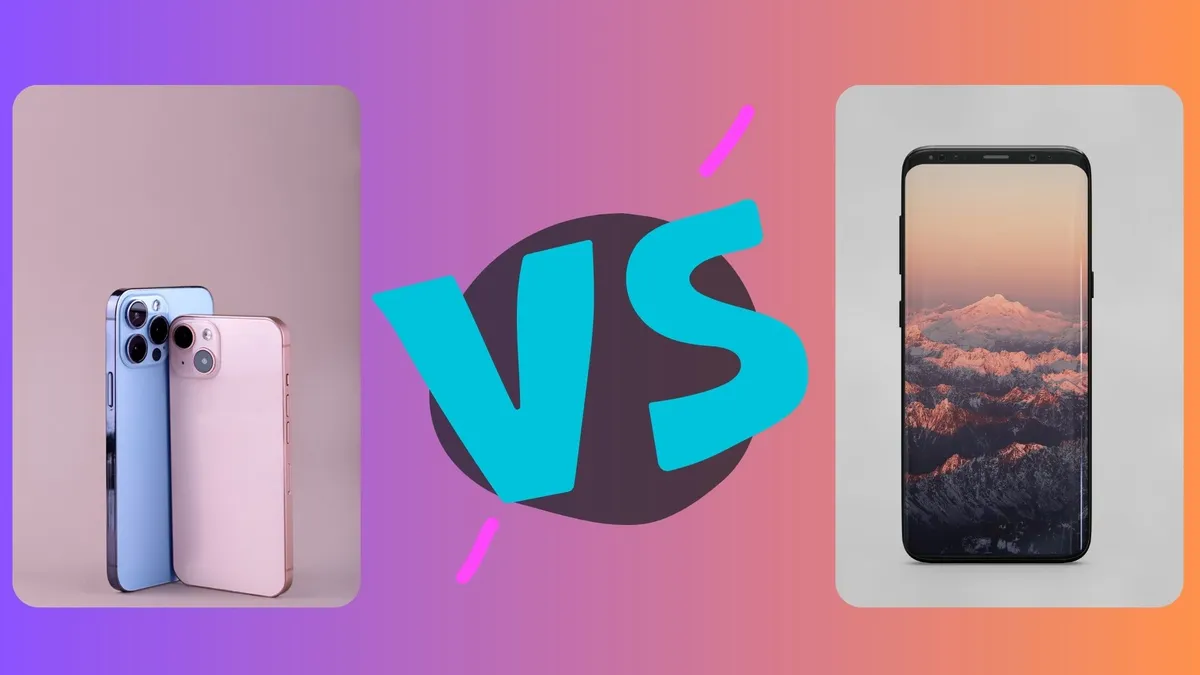Apple and Android: A Comparison of Two Popular Smartphone Operating Systems
Smartphones have essentially become a necessity in our fast-paced modern life. Whether it is for staying connected with friends and family, accessing the internet, or managing our daily tasks, smartphones have made our lives easier in countless ways. Choosing the best smartphone might be difficult, though, given all the alternatives on the market.
The best option is ultimately determined by the needs and tastes of the user. While both offer a plethora of features and functionalities, they have their unique strengths and weaknesses.
In this article, we will compare and contrast Apple vs. Android to help you determine which one is the better choice for you.
User Interface
The user interface is important for a smartphone’s user experience. Apple’s iOS is clean, simple, and consistent across all devices, while Android offers more customization options. Apple’s design is focused on simplicity, while Android’s interface is more complex.
Apple is generally considered more user-friendly, while Android offers more options for personalization. The choice between Apple and Android depends on personal preference for user interface and ease of use.
App Store and App Quality
App Store:
- Apple’s App Store is known for its strict review process, which ensures that all apps meet their quality standards before they are made available to users.
- The App Store is the only place where iOS users can download apps for their devices.
- Apple takes a 30% cut of app sales on their platform, which has been a point of controversy among developers.
App Quality:
- Apple’s strict review process for apps means that iOS users can expect high-quality apps that meet their standards for design, functionality, and security.
- Android’s open-source nature means that there is a wider range of app quality on the Google Play Store. While there are many high-quality apps available, there are also many low-quality or potentially harmful apps that users need to be cautious of.
- Both Apple and Android have taken steps to improve app quality, such as removing apps that violate their policies and offering tools for developers to improve their app design and functionality.
Hardware
- Apple designs both their hardware and software, which means that their devices are optimized to work seamlessly together.
- Apple devices, such as the iPhone and iPad, are known for their premium quality and sleek design.
- The cost of Apple products is typically higher than that of Android devices.
- Android devices come from a wide range of manufacturers, such as Samsung, Google, and LG, which means that there is a wide range of design and feature options available to consumers.
- Android devices tend to have more diverse hardware options, such as expandable storage and headphone jacks.
- Android devices also tend to have a wider price range, from budget-friendly options to high-end devices.
Security and Privacy
Apple has a strong focus on security and privacy with built-in features such as Touch ID, Face ID, and end-to-end encryption. Their closed ecosystem gives them more control over security. Android has made improvements in recent years with monthly security updates and Google Play Protect, but their open-source nature makes them more vulnerable.
Android allows users to grant or deny permissions on a case-by-case basis, while iOS only allows users to grant permissions at the time of app installation.
Ecosystem and Integration
Apple’s ecosystem and integration are seamless due to their closed system approach. All of their hardware, software, and services are designed to work seamlessly together, providing a consistent user experience. This integration extends to features such as Handoff, which allows users to transfer tasks between devices, and AirDrop, which allows users to share files wirelessly between Apple devices.
In contrast, Android has a more open ecosystem with a range of hardware manufacturers and third-party apps. While this allows for more diverse options, it can also result in a less seamless user experience. However, Google has made strides in improving integration with features such as Google Assistant and Google Drive, which can be used across a range of devices and platforms.
User Preferences and Needs
When it comes to user preferences and needs, it largely depends on the individual user. Some people prefer Apple’s seamless integration and premium quality, while others prefer the wider range of options and lower price points offered by Android devices.
Users who prioritize security and privacy may prefer Apple’s closed ecosystem and strong focus on these features, while users who prioritize customizability may prefer the more open nature of Android.
The best option is ultimately determined by the needs and tastes of the user.
Conclusion
In conclusion, the decision between Apple and Android comes down to individual preferences and needs. Apple is known for their seamless integration, premium quality, and strong focus on security and privacy, while Android offers a wider range of options and price points, as well as more customizability.
Both operating systems have made significant strides in improving their respective weaknesses, but the choice ultimately depends on what the user values most. It’s important for users to consider their priorities and do their own research to make an informed decision that best suits their needs.



